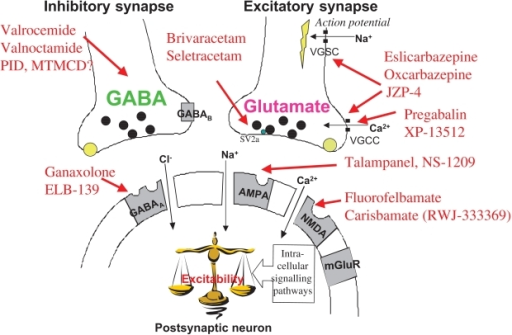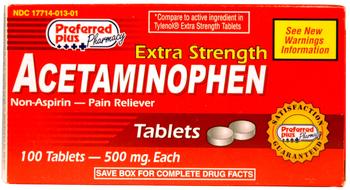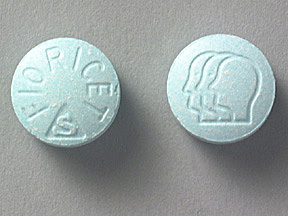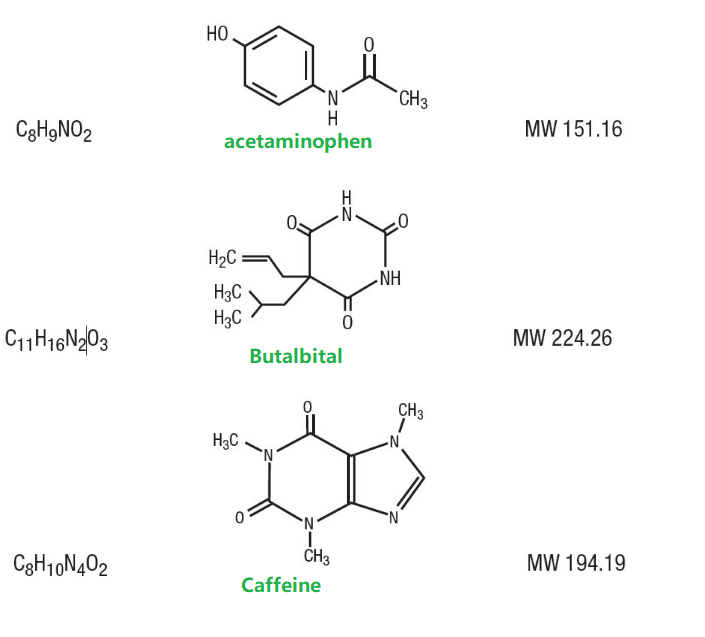| Product Name |
Price |
Shipping |
Total |
Order |
| Generic Fioricet – 180 Tabs |
$239 |
free |
$239 |
Order Fioricet |
| Generic Fioricet – 120 Tabs |
$199 |
free |
$199 |
Order Fioricet |
| Generic Fioricet – 90 Tabs |
$239 |
free |
$239 |
Order Fioricet |
| Gabapentin 800 mg – 180 Tabs |
$189 |
free |
$199 |
Order |
| Gabapentin 600 mg – 180 Tabs |
$185 |
free |
$195 |
Order |
| Cyclobenzaprine (Generic Flexeril 10mg) 180 pills |
$159 |
free |
$159 |
Order |
| Zanaflex (Generic Tizanidine ) 4mg – 180 Tabs |
$156 |
free |
$156 |
Order |
| Methocarbamol (Gen. for Robaxin) 500mg – 180 Tabs |
$158 |
free |
$158 |
Order |
| Tadalafil ( Generic Cialis ) – 20mg – 120 Pills |
$209 |
free |
$209 |
Order |
| Tadalafil ( Generic Cialis ) – 20mg – 120 Pills |
$209 |
free |
$209 |
Order |
| Sildenafil ( Generic Viagra ) – 100mg – 120 Tablets |
$209 |
free |
$209 |
Order |
We guarantee the best fioricet, Gabapentin, Generic Neurontin and generic fioricet, butalbital apap caffeine online at the cheapest prices. We provide free USPS priority mail delivery service by COD payment services.
A lot of patients want to buy fioricet or Gabapentin online because of free doctor prescription fee and cheaper prices. If you have not health insurance, the best choices are to go online fioricet or Gabapentin websites to buy your headache treatment medicine fioricet or pain reliever gabapentin.
What is Gabapentin ?
Gabapentin is used with other medications to prevent and control seizures. It is also used to relieve nerve pain following shingles (a painful rash due to herpes zoster infection) in adults.
Gabapentin is known as an anticonvulsant or antiepileptic drug.
OTHER USES: This section contains uses of this drug that are not listed in the approved professional labeling for the drug but that may be prescribed by your health care professional. Use this drug for a condition that is listed in this section only if it has been so prescribed by your health care professional.
Gabapentin may also be used to treat other nerve pain conditions (such as diabetic neuropathy, peripheral neuropathy, trigeminal neuralgia) and restless legs syndrome.
Gabapentin is an anti-epileptic medication, also called an anticonvulsant. It affects chemicals and nerves in the body that are involved in the cause of seizures and some types of pain.
Gabapentin is used in adults to treat nerve pain caused by herpes virus or shingles (herpes zoster).
The Horizant brand is also used to treat restless legs syndrome (RLS).
The Neurontin brand is also used to treat seizures in adults and children who are at least 3 years old.
Use only the brand and form of gabapentin that your doctor has prescribed. Check your medicine each time you get a refill at the pharmacy, to make sure you have received the correct form of this medication.
Gabapentin may also be used for purposes not listed in this medication guide.
How should I take gabapentin?
Take gabapentin exactly as prescribed by your doctor. Follow all directions on your prescription label. Do not take this medicine in larger or smaller amounts or for longer than recommended.
The Horizant brand of gabapentin should not be taken during the day. For best results, take Horizant with food at about 5:00 in the evening.
Both Gralise and Horizant should be taken with food.
Neurontin can be taken with or without food.
If you break a Neurontin tablet and take one half of it, take the other half at your next dose. Any tablet that has been broken should be used as soon as possible or within a few days.
Measure liquid medicine with a special dose-measuring spoon or medicine cup. If you do not have a dose-measuring device, ask your pharmacist for one.
If your doctor changes your brand, strength, or type of gabapentin, your dosage needs may change. Ask your pharmacist if you have any questions about the new brand you receive at the pharmacy.
Do not stop using gabapentin suddenly, even if you feel fine. Stopping suddenly may cause increased seizures. Follow your doctor’s instructions about tapering your dose.
Wear a medical alert tag or carry an ID card stating that you take gabapentin. Any medical care provider who treats you should know that you take seizure medication.
This medication can cause you to have a false positive urine protein screening test. If you provide a urine sample for testing, tell the laboratory staff that you are taking gabapentin.
Store at room temperature away from light and moisture.
Store the liquid medicine in the refrigerator. Do not freeze.
Gabapentin Can be used for a lot of Nerve Pain related health conditions including Cough, Hot Flashes, Alcohol Withdrawal, Anxiety 161 reviews, Bipolar Disorder, Trigeminal Neuralgia, Postherpetic Neuralgia, Migraine, Insomnia? Occipital Neuralgia? Peripheral Neuropathy?Vulvodynia, Benign Essential Tremor, Epilepsy, Fibromyalgia, Pain Relief, Diabetic Peripheral Neuropathy , Neuropathic Pain?Reflex Sympathetic Dystrophy Syndrome?Periodic Limb Movement Disorder? Spondylolisthesis? Burning Mouth Syndrome?Pudendal Neuralgia? Small Fiber Neuropathy.
Use only the brand and form of gabapentin that your doctor has prescribed. Check your medicine each time you get a refill at the pharmacy, to make sure you have received the correct form of this medication. Do not stop taking Gabapentin unless your doctor tells you to. If your treatment is stopped it should be done gradually over a minimum of 1 week. If you stop taking gabapentin suddenly or before your doctor tells you, there is an increased risk of seizures.
the ingredients in NEURONTIN
The active ingredient in NEURONTIN capsules, tablets, and oral solution is gabapentin,which has the chemical name 1-(aminomethyl)cyclohexaneacetic acid.
The molecular formula of gabapentin is C9H17NO2 and the molecular weight is 171.24. The structural formula of gabapentin is:

Gabapentin is a white to off-white crystalline solid with a pKa1 of 3.7 and a pKa2 of 10.7. It is freely soluble in water and both basic and acidic aqueous solutions. The log of the partition coefficient (n-octanol/0.05M phosphate buffer) at pH 7.4 is –1.25.
Each Neurontin capsule contains 100 mg, 300 mg, or 400 mg of gabapentin and the following inactive ingredients: lactose, cornstarch, talc, gelatin, titanium dioxide, FD&C Blue No. 2, yellow iron oxide (300 mg and 400 mg only), and red iron oxide (400 mg only).
Each Neurontin tablet contains 600 mg or 800 mg of gabapentin and the following inactive ingredients: poloxamer 407, copovidone, cornstarch, magnesium stearate, hydroxypropyl cellulose, talc, and candelilla wax
Neurontin oral solution contains 250 mg of gabapentin per 5 mL (50 mg per mL) and the following inactive ingredients: glycerin, xylitol, purified water, and artificial cool strawberry anise flavor.
Gabapentin Mechanism of action

The chemical structure of gabapentin (Neurontin) is derived by addition of a cyclohexyl group to the backbone of gamma-aminobutyric acid (GABA). Gabapentin prevents seizures in a wide variety of models in animals, including generalized tonic-clonic and partial seizures. Gabapentin has no activity at GABAA or GABAB receptors of GABA uptake carriers of brain.
Gabapentin interacts with a high-affinity binding site in brain membranes, which has recently been identified as an auxiliary subunit of voltage-sensitive Ca2+ channels. However, the functional correlate of gabapentin binding is unclear and remains under study. Gabapentin crosses several lipid membrane barriers via system L amino acid transporters.
In vitro, gabapentin modulates the action of the GABA synthetic enzyme, glutamic acid decarboxylase (GAD) and the glutamate synthesizing enzyme, branched-chain amino acid transaminase. Results with human and rat brain NMR spectroscopy indicate that gabapentin increases GABA synthesis. Gabapentin increases non-synaptic GABA responses from neuronal tissues in vitro. In vitro, gabapentin reduces the release of several mono-amine neurotransmitters.
Gabapentin prevents pain responses in several animal models of hyperalgesia and prevents neuronal death in vitro and in vivo with models of the neurodegenerative disease amyotrophic lateral sclerosis (ALS).
Gabapentin is also active in models that detect anxiolytic activity. Although gabapentin may have several different pharmacological actions, it appears that modulation of GABA synthesis and glutamate synthesis may be important.
Who is not suitable for Ordering Gabapentin Online ?
Normally Gabapentin is suitable for all adult and children bigger than six years old. But you are not allowed to order Gabapentin online if you have any of following health conditions (But you are OK to order in your local street pharmacies):
-
-
- You are younger than 18 years old;
- You have kidney disease;
- diabetes;
- liver disease and heart diseases;
- a history of depression, mood disorder, drug abuse, or suicidal thoughts or actions;
- (for patients with RLS) if you are a day sleeper or work a night shift;
- You are breastfeeding mother or you are pregnant;
- have thoughts about suicide.
Stop immediately if you have any thoughts about suicide. Donot order Gabapentin online if you have suicide thoughts. Please go to your doctor to have your completely checked.
FDA Warnings
The U.S. Food and Drug Administration (FDA) is warning that serious breathing difficulties may occur in patients using gabapentin (Neurontin, Gralise, Horizant) or pregabalin (Lyrica, Lyrica CR) who have respiratory risk factors. These include the use of opioid pain medicines and other drugs that depress the central nervous system, and conditions such as chronic obstructive pulmonary disease (COPD) that reduce lung function. The elderly are also at higher risk.
Gabapentin and pregabalin are FDA-approved for a variety of conditions, including seizures, nerve pain, and restless legs syndrome.
Our evaluation shows that the use of these medicines, often referred to as gabapentinoids, has been growing for prescribed medical use, as well as misuse and abuse. Gabapentinoids are often being combined with CNS depressants, which increases the risk of respiratory depression. CNS depressants include opioids, anti-anxiety medicines, antidepressants, and antihistamines. There is less evidence supporting the risk of serious breathing difficulties in healthy individuals taking gabapentinoids alone. We will continue to monitor these medicines as part of our routine monitoring of all FDA-approved drugs.
What are gabapentinoids and how can they help me?
Gabapentinoids are FDA-approved to treat a variety of conditions including partial seizures and nerve pain from spinal cord injury, shingles, and diabetes. Other approved uses include fibromyalgia and restless legs syndrome. Gabapentin was first approved in 1993 and pregabalin was first approved in 2004. Gabapentin is marketed under the brand names Neurontin and Gralise, and also as generics. Gabapentin enacarbil is marketed under the brand name Horizant. Pregabalin is marketed under the brand names Lyrica and Lyrica CR, and also as generics. Pregabalin is a Schedule V controlled substance, which means it has a lower potential for abuse among the drugs scheduled by the Drug Enforcement Administration (DEA), but may lead to some physical or psychological dependence.
What is the risk to take Gabapentin ?
All medicines have side effects even when used correctly as prescribed, but in general the benefits of taking a medicine outweigh these risks. It is important to know that people respond differently to all medicines depending on their health, other medicines they are taking, the diseases they have, genetics, and many other factors. As a result, we cannot determine the likelihood that someone will experience these side effects when taking gabapentinoids. Your personal health care professional knows you best, so always tell them about all other medicines you are taking and if you experience any side effects while taking your medicines.
Gabapentin side effects
Get emergency medical help if you have any of these signs of an allergic reaction to Gabapentin: hives; fever; swollen glands; painful sores in or around your eyes or mouth; difficulty breathing; swelling of your face, lips, tongue, or throat.
Report any new or worsening symptoms to your doctor, such as: mood or behavior changes, anxiety, depression, or if you feel agitated, hostile, restless, hyperactive (mentally or physically), or have thoughts about suicide or hurting yourself.
Call your doctor at once if you have:
- increased seizures;
- fever, swollen glands, body aches, flu symptoms;
- skin rash, easy bruising or bleeding, severe tingling, numbness, pain, muscle weakness;
- upper stomach pain, loss of appetite, dark urine, jaundice (yellowing of the skin or eyes);
- chest pain, irregular heart rhythm, feeling short of breath;
- confusion, nausea and vomiting, swelling, rapid weight gain, urinating less than usual or not at all;
- new or worsening cough, fever, trouble breathing;
- rapid back and forth movement of your eyes; or
- severe skin reaction — fever, sore throat, swelling in your face or tongue, burning in your eyes, skin pain, followed by a red or purple skin rash that spreads (especially in the face or upper body) and causes blistering and peeling.
Some side effects are more likely in children taking gabapentin. Contact your doctor if the child taking this medication has any of the following side effects:
- changes in behavior;
- memory problems;
- trouble concentrating; or
- acting restless, hostile, or aggressive.
Common gabapentin side effects may include:
- dizziness, drowsiness;
- dry mouth, blurred vision;
- headache;
- diarrhea; or
- swelling in your hands or feet.
This is not a complete list of side effects and others may occur. Call your doctor for medical advice about side effects. You may report side effects to FDA at 1-800-FDA-1088.
Gabapentin Withdrawal
Gabapentin withdrawal occurs when stopping use of the drug after becoming physically dependent on it. It is possible to become physically dependent on gabapentin even when using the medication only as prescribed, particularly if it is used on a long-term basis.
Symptoms of withdrawal typically begin within 12 hours of the last drug use and may last up to a week. If gabapentin is being used to treat a seizure disorder, stopping use of the drug too suddenly can cause the frequency of seizures to increase.
Gabapentin can cause changes in mood and may trigger depressive episodes, as well as compulsive thoughts. Withdrawal can also trigger mood episodes and other mental health problems, including anxiety and suicidal ideation. This is more likely in young adults and children. These symptoms of gabapentin withdrawal can last longer than acute physical symptoms, sometimes lasting weeks or months.
There are currently no FDA-approved medications for the treatment of gabapentin withdrawal. Some withdrawal symptoms, such as nausea and pain, may be treated with medications specifically for those symptoms. The main treatment for gabapentin withdrawal is supportive medical care and behavioral interventions. If an addiction is present, withdrawal may be the first step in the recovery process from a substance use disorder.
Gabapentin is an Addiction Treatment Medication
Gabapentin is used to treat cases of addiction in an off-label manner. Different companies, including Parke-Davis, Greenstone, and Teva, manufacture several varieties of the generic drug. Other drugs that have been used to treat the symptoms of addiction withdrawal, for specific substances, include:
-
-
- Clondine
- Other anticonvulsants, such as Tegretol and Depakote
- Methadone and buprenorphine
- Naltrexone
Typical Application
Available in capsules, tablets, and as an oral liquid, dosages range from 100 mg to 800 mg. The frequency with which a dose is repeated depends on the specific dose, which is usually based on the severity of withdrawal and the client’s weight. The drug’s half-life is around 5-7 hours.
Generally, it is used during medical detox and throughout subsequent treatment modalities to support relapse prevention while clients adjust to their new sober lifestyles.
Treating Substance Abuse
According to Medscape, gabapentin can inflict users with suicidal thoughts and abrupt changes in behavior. For this reason, it should only be used under medical supervision. It can also cause elevated blood pressure, fever, sleep problems, appetite changes, and chest pain.
While it has been used to treat addictions to other substances, gabapentin is most often used to treat alcoholism — an addiction some 16.6 million adults suffered from in 2013, per the National Institute on Alcohol Abuse and Alcoholism.
During withdrawal from alcohol abuse or dependency, clients may experience anxiety, tremors, agitation, and irritability. In order to understand how gabapentin works, there must be a basic understanding of how the brain works first. Nervous system activity is partially controlled by GABA neurotransmitters. Gabapentin works by reducing activity among GABA. As a result, signals for pain, agitation, and anxiety are reduced, too.
An American Journal of Psychiatry study showed impressive results during the 16-week treatment of 150 people who were dependent on alcohol, noting better results among those who were treated with both gabapentin and naltrexone than the latter alone. TheJournal of Clinical Psychiatry reported on another study in which individuals treated for alcoholism with gabapentin showed a significant reduction in how much they drank and a greater rate of abstinence than those in the placebo group.
Gabapentin has the same calming effect on individuals who are detoxing from marijuana and benzodiazepines. Despite claims from fans of the plant-based drug, marijuana is indeed addictive. In 2012, 305,560 people checked into rehab citing cannabis as their primary drug of abuse, per the Substance Abuse and Mental Health Services Administration. One Neuropsychopharmacology study that analyzed the use of gabapentin in the treatment of marijuana addiction and withdrawal noted individuals in the gabapentin treatment group used less marijuana, had fewer withdrawal symptoms, and experienced improvements in cognitive functioning, compared to the placebo group.




